Battle of the 4 TB NAS Drives: WD Red and Seagate NAS HDD Face-Off
by Ganesh T S on September 4, 2013 6:00 AM EST- Posted in
- NAS
- Seagate
- HDDs
- Western Digital
- Enterprise
Performance - Raw Drives
Prior to evaluating the performance of the drives in a NAS environment, we wanted to check up on the best-case performance of the drives by connecting them directly to a SATA 6 Gbps port. Using HD Tune Pro 5.0, we ran a number of tests on the raw drives. The following screenshots present the results for the various drives in an easy-to-compare manner.
Sequential Reads
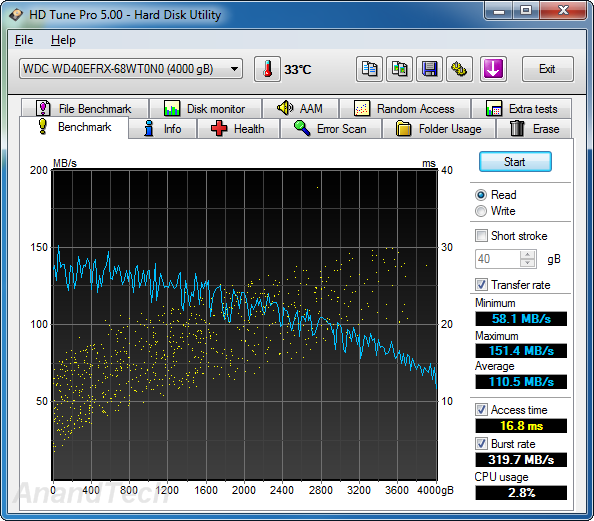
The WD Se and WD Re drives, as expected, lead the benchmark numbers with an average transfer rate of around 136 MBps. The Seagate unit (135 MBps) performs better than the WD Red (111 MBps) in terms of raw data transfer rates, thanks to the higher rotational speed. However, the burst rate of the Seagate NAS HDD is much lower than that of the WD Red. This is probably because the DDR2 memory used in the WD drives is clocked higher than the one in the NAS HDD.
Sequential Writes
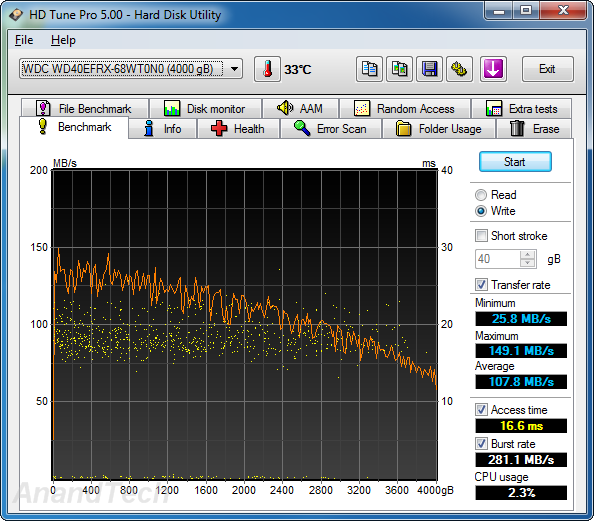
A similar scenario plays out in the sequential write benchmarks. The WD Re leads the pack with an average transfer rate of 135 MBps and the WD Se follows close behind at 133 MBps. The WD Red comes in at 108 MBps and the Seagate NAS HDD clocks in at 131 MBps. The on-board cache in the WD series is faster than that on the Seagate unit, leading to better burst rates.
Random Reads
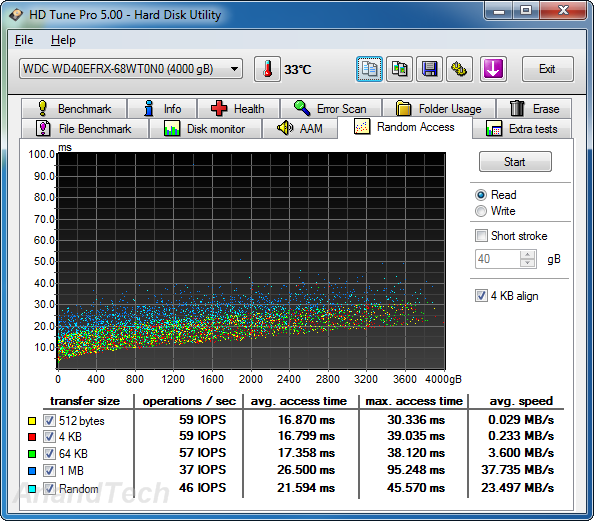
In the random read benchmarks, the WD Red and Seagate NAS HDD perform fairly similar to each other in terms of IOPS as well as average access time. The WD Re edges out the WD Se despite similar rotational speeds and platter structure.
Random Writes

The differences between the enterprise-class drives and the consumer / SOHO NAS drives is even more pronounced in the random write benchmark numbers. The Seagate NAS HDD loses out in terms of both IOPS and average access time to the WD Red. WD Re and WD Se perform much better in this scenario.
Miscellaneous Reads
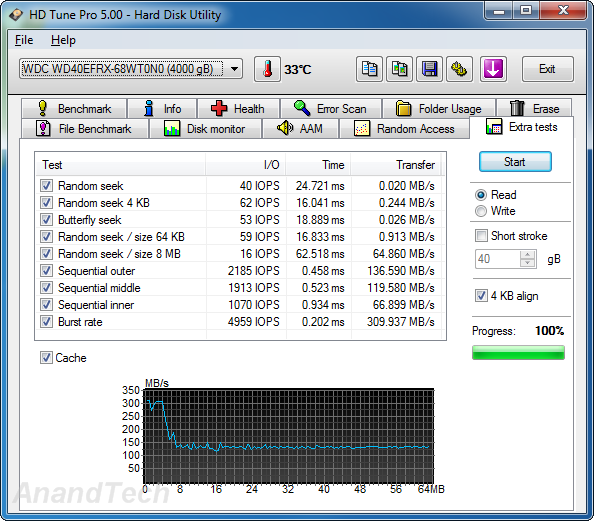
HD Tune Pro also includes a suite of miscellaneous tests such as random seeks and sequential accesses in different segments of the hard disk platters. The numbers above show the WD Red and Seagate NAS HDD matched much more evenly with the NAS HDD emerging slightly better in quite a few of the tests. The cache effects are also visible in the final graph.
Miscellaneous Writes
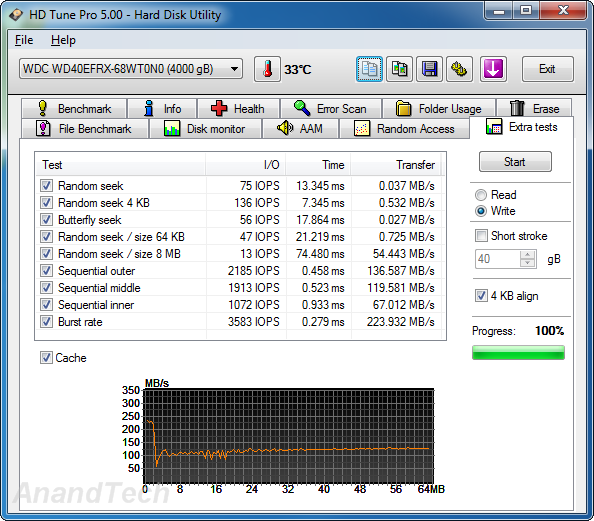
Similar to the previous sub-section, we find that the WD Red edges out the Seagate NAS HDD in the 4KB random seek test, but loses out in a majority of the other tests which are heavily influenced by the rotational speed.
We now have an idea of the standalone performance of the four drives being considered today. In the next section, we will take a look at the performance of these drives when placed inside a typical SOHO / consumer NAS.










54 Comments
View All Comments
zlandar - Wednesday, September 4, 2013 - link
Would really like a comparison in a RAID-5 setup with 4 drives since that's what I use for media storage.Tell Seagate to send you 3 more drives!
otherwise - Wednesday, September 4, 2013 - link
Does anyone know how read patrolling factors into usage numbers? There is no way I would come even close to 150 TB/yr in a home NAS with my own data, but with ZFS read patrolling going on in the background I don't exactly know what the true load is.bobbozzo - Thursday, September 5, 2013 - link
I don't really understand these read or read/write ratings... iirc, Google's data said reads and writes do not affect failure rate on hard drives. (SSD's are obviously a different story, for writes).htspecialist - Wednesday, September 4, 2013 - link
I have had good experience with Hitachi drives in NAS use. HGST has both consumer class and enterprise class 7200 rpm 4tb drives capable of NAS use. Any plans to include the HGST in the review evaluation of 4tb NAS capable drives?wintermute000 - Wednesday, September 4, 2013 - link
yah I've had several WD and Seagate failures over the last 6-7 years of running 4 drives in a RAID5 but no Hitachi failures, running all hitachi nowiwod - Wednesday, September 4, 2013 - link
To me, Speed doesn't matter any more. Not for NAS Market. Since even the slowest HDD will saturate 1Gbits Ethernet in Sequential Read Write, and Random Read Write are slow as well as mostly limited by the NAS CPU as well.I want Price and Disk Size. Reliability is also a concern as well but since most HDD will just fail in one way or another over time It is best to have something like Synology where you over a number of disk you could have up to 2 HDD failure.
tuxRoller - Wednesday, September 4, 2013 - link
Are the idle power numbers in the chart correct?It looks like the decimal point was pushed to right...
KAlmquist - Thursday, September 5, 2013 - link
The power numbers are wall power, so it includes power supply losses and the power consumed by the LenovoEMC PX2-300D, in addition to the power consumed by the hard drive. So the absolute values aren't useful (unless you own a PX2-300D), but the numbers do show which drives consume less power.mcfaul - Tuesday, September 10, 2013 - link
seconded, i have 32 x 3tb drives.. the heat adds up....mcfaul - Tuesday, September 10, 2013 - link
"We have also been very impressed with WD's response to various user complaints about the first generation Red drives."Can you expand on what the complaints were, and what WD have done about them? I've only heard good things about the Red drives